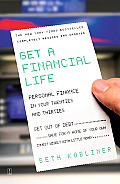Which should you choose to invest in first, college savings or retirement?
How do you evaluate the perks and pitfalls?
Like many parents we’ve wanted to open college saving accounts since our kiddos were born, but it just hasn’t happened yet. Our two biggest reasons have been the fact that I’m still paying on
my own college loans, and our expensive child care tab.
So, we’ve been telling ourselves that as soon as our child care costs go down we’ll open accounts, and this month our tuition was reduced by $120 when our BigGuy moved up to the Older Preschool class. So I’ve been researching my options (the first month of “savings” is going to dance and swim classes).
Most states have 529 plans, and the beauty of the Oregon College Savings Plan is that you can start with as little as $25 and contribute as little as $15 per pay period per account. There are also 15 different investment funds to chose from and plenty of other tax perks. The calculator is pretty nifty, but also scary to see how much its going to cost.
But like most financial decisions, life really isn’t that simple. With Obama’s new student loan policy offering more tax benefits to parents, I’ve been wondering whether it even makes since to save for college. According to my employer calculations, for every $100 I contribute to my retirement it will only draw about $60 from my paycheck. While there are many tax benefits for college savings, it’s not clear to me if they can actually match that rate. Plus, whether retirement or college savings, there’s risk of loosing out like many have in the recession. We can just hope that once the economy has recovered it will be more sustainable all the way around.
So, back to the question, would it pay off to put more into our retirement and let that fund grow so that we have more of income available once college time arrives? I’ve heard multiple times that you can’t get a loan for your retirement, but it also feels kind of selfish to talk myself out investing in our kiddos’ future.
I haven’t made my mind up about which path to take (or both) and would love your comments.
Do you have a college savings plan?
Or are you maxing your retirement first?
~*~*~*~*~*~
Sustainable Family Finances
The story of a family creating an abundant and sustainable life.




